Introduction
To start, I would like to explain what a castle magic trigger is for those who do not know. Castle magic at the base operates by having one item perform an action when certain conditions are met. I like to refer to this as the item “triggering.” This guide will be covering all the items that can be used to trigger things to happen.
Buttons or levers are some of the most common triggers. I will be covering both how to use them, and some interesting ways to include them in your designs. Remember, you can buy all castle magic items from Babbage Basset. This guide will be split up into beginner, intermediate, and advanced triggers because they vary in complexity.
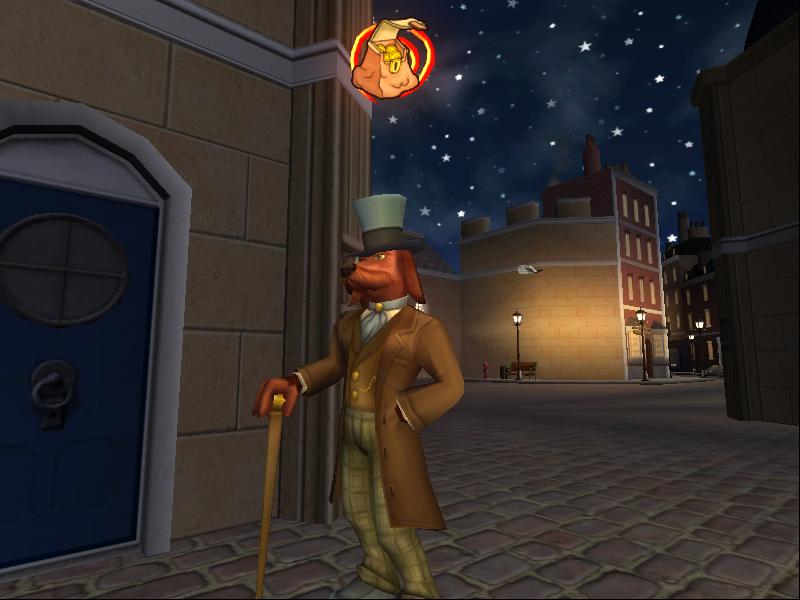
Beginner Triggers
These will be the simplest items, generally only consisting of a single condition and a single output. If you are just testing the waters of castle magic. I would suggest you play around using these items first. After you are familiar with the basics then explore the more advanced sections.
- Magic Buttons
There are two types of magic buttons. The magic button which gets placed on the wall, or the magic floor button, which gets placed on the floor. They operate the same way and only differ in where they can be placed. These are the simplest castle magic triggers and only contain the condition “When Button Pressed Cast Spell.” So, to use a button you need to place the spell you want to cast in the main section then select a target that you want the spell to cast on. Now when the button is pressed, that spell will cast.
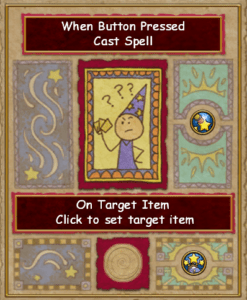
- Magic Start Detector
Similar to the magic button, but with a much easier condition to meet. This item has the condition “When Area Started Cast Spell”. This means that when someone enters the area the detector is placed in, they will see the spell get cast one time. This can be useful if you want to adjust the size or location of an object. Just like with the magic button, place the spell you want cast in the main section. Then pick a target and the spell will be cast automatically.
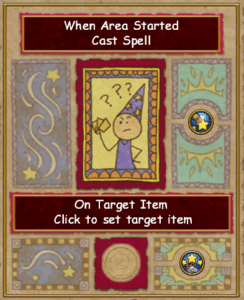
- Magic Lever
The magic lever is slightly more complicated than the previous triggers. Unlike the buttons and start detector, the lever has two possible states. Therefore, there will be two outputs. The lever has one condition for “When Lever Switched On”, and another condition for “When Lever Switched Off.” This means it could cast two different spells, depending on which way it is pulled. Even though it is slightly more complicated, I put this in the basic section because both parts of this trigger function the same way.
Place the spell you want to cast in the main section, then pick a target. The lever will cast the spell when it is moved into the matching position. I like to use levers when I want something that can be undone. For example, levers are great for making magic doors. You can make an object move one direction when switched on, and then make it move back the opposite direction when switched off.
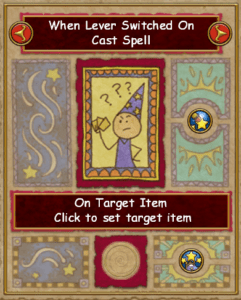
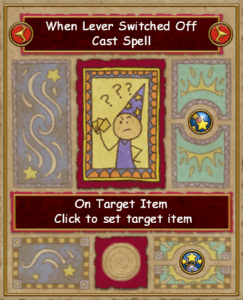
- Magic Pressure Plate
The magic pressure plate is almost a carbon copy of the magic lever. It has two states as well, “When Plate Pressed Cast Spell” and “When Plate Released Cast Spell.” I use this less often than I use the magic lever because it’s a lot easier to accidentally step on a pressure plate and trigger accidentally. Yet, this can be used in the same way the magic lever can and could fit into your design in a better way than the magic lever in some cases. I always keep this trigger in the back of my mind when starting a new project.
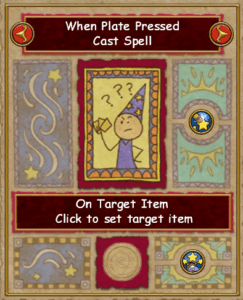
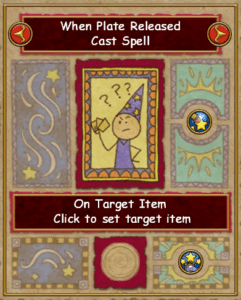
Conclusion
This concludes the beginning castle magic triggers. There are many more triggers as well as additional uses for these beginner triggers that will be covered in our next installment. If you have any questions on how to operate or use these triggers or about castle magic in general, feel free to ask in the comments below. Otherwise, stay tuned for the intermediate and advanced castle magic guides.